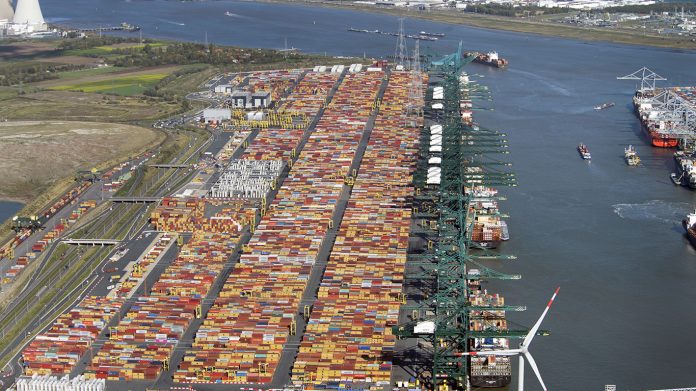
Chinese exports drive port congestion in Europe
LONDON : Congestion in European ports is hardly new. Long before the 2020s, logisticians working at container terminals had warned that there was insufficient capacity to support sustained growth. In particular, landside infrastructure had not been expanding fast enough.
Unsurprisingly, the problem has re-emerged, with the three leading ports on the continent, Rotterdam, Antwerp and Hamburg, experiencing increasing waiting times for vessels to enter berths. In some cases, ships are facing delays of up to two days. As usual, this is resulting in suboptimal operations within the terminals with a build-up of containers waiting to be loaded.
Even London Gateway, which has seen continued investment to cope with its rapid growth, is now reported to be struggling, with CMA CGM announcing that it is temporarily diverting its SAFRAN service away from London Gateway to the port of Southampton due to what it calls the “port congestion situation at London Gateway”.
Jacques Vandermeiren, CEO of Port of Antwerp-Bruges commented to the press on the situation in his port, saying that “calling it busy is putting it mildly…..chaos is a better word”. The situation in Antwerp is made worse by sporadic strikes.
However, there are underlying economic factors driving this congestion. Once again, the issue is with China’s production surpluses. Facing more hostile market conditions in the US due to the imposition of tariffs, Chinese companies have sought to increase export activity to Europe.
A piece of research just published from the economic consultancy Capital Economics quantifies this. It asserts that on the one-hand, Chinese exports to the US are “37% lower than at the start of the year” whilst exports to Europe and the rest of the world are “up by over 10% since the start of this year”. The obvious side-effect of this shift is a flood of container traffic into Europe. A further characteristic is that the flow of containers is even more unbalanced in terms of imports and exports.
How sustainable this is very unclear. Chinese manufacturers are desperate to find new markets, having invested in production far beyond what their economy can consume. Profits and prices are under acute pressure within China and even the Chinese authorities are talking about the need to boost consumer demand. In the meantime, European economies may become increasingly intolerant of absorbing these exports. The possibility of falls in volume of European imports from China, as seen in the US, cannot be dismissed. Such a dynamic would have violent effects on the European container sector.
Source: Ti Insight
